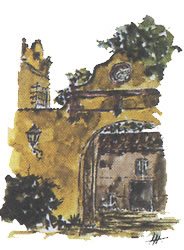EN 17658: 2022. Chemical textile disinfection for the domestic area. Test method and requirements (phase 2, step 2).
Test accredited by ENAC (Spanish National Accreditation Entity).
The EN 17658 Standard specifies a test method and the minimum requirements for the microbiocidal activity of a chemical product which intended use is the chemical treatment of textiles in domestic area in order to evaluate the hygienic performance of domestic laundry products within domestic washing machines at low temperatures (≤ 40ºC). This document also applies to products that are used to chemical disinfection of textiles in food, industrial and institutional areas (food processing, shops, spot rooms, offices, hotels, workwear, foodstuff areas or similar institutions), but no when the disinfection is medically indicated (medical area). This procedure does not apply to certain types of laundry disinfection technologies which requires specific devices (for example, actives substances generated in situ through the use of specific devices).
This test can be used for evaluation of two types of textile treatments: domestic and non-medical laundry disinfection and aesthetic and bad smell treatment. The domestic and non-medical laundry disinfection is based on the treatment of textile with chemical products to inactivate microbial load being the purpose to prevent the transmission of laundry microbiota between contaminated and non-contaminated textiles. While the aesthetic and bad smell treatment aim to reduce the microorganisms to a level that prevents negative impact to the laundry, damage to aesthetics or accumulation of microbial contamination causing bad smell. In addition, the test can be performed by simulating the application of the product during a main wash cycle or a rinse cycle.
In the EN 17658 test, textile (cotton) carriers of 1 cm2 are contaminated with the suspension of the test microorganisms in bovine serum albumin. The mandatory microorganisms are Escherichia coli, Enterococcus hirae, Pseudomonas aeruginosa, Staphylococcus aureus and Candida albicans. As additional test microorganisms, the Standard indicates dermatophytes (Trichophyton rubrum, Trichophyton mentagrophytes and Microsporum canis) and other microorganisms associated with bad smell. After drying, the inoculated carriers and also uninoculated carriers are transferred to an exposure chamber with textile ballast load and the test product. The exposure chamber is placed in a tumbling device able to rotate the chamber through 360º vertical orbit and in which the domestic disinfection process is simulated (our laboratory uses Gyrowash as tumbling device). At the end of the disinfection step, the product effect is stopped by transferring the carriers into a neutralizer solution and the number of the surviving microorganisms of the carriers is determined and the reduction rate calculated compared to an untreated control. In addition, the transfer of microorganisms from inoculated to uninoculated carriers and contamination of the wash water are determined as well. Three series of the test must be performed.
The test must be performed with the product concentration and contact time recommended by the manufacturer on the basis on the practical conditions of the product application, the contact temperature indicated by the manufacturer but ≤ 40ºC for products intended to be used during the main wash and ≤ 20ºC for products intended to be used during the rinsing cycle. The soiling conditions must be dirty conditions for products intended to be used during the main wash and clean conditions for products intended to be used during the rinsing cycle. The water ratio must be defined by the manufacturer but must be between 1:2 and 1:10.
A product intended for domestic and non-medical laundry disinfection, used during the main wash, pass the test if shows in three valid test series a logarithmic reduction ≥ 4 on carriers contaminated with bacteria (bactericidal activity), ≥ 3 on carriers inoculated with Candida albicans (yeasticidal activity), and ≥ 3 for an additional fungicidal activity (with dermatophytes fungi). Furthermore, no more than 1.54 log CFU/carrier must be detected in uninoculated carriers (cross contamination) and no more than 1.15 log CFU/mL in wash water. On the other hand, a product intended domestic and non-medical laundry disinfection, used during the rinsing cycle, pass the test if shows in three valid test series a logarithmic reduction ≥ 3 on inoculated carriers with bacteria (bactericidal activity), ≥ 3 on carriers inoculated with Candida albicans (yeasticidal activity), and ≥ 3 for an additional fungicidal activity (with dermatophytes fungi). Furthermore, no more than 1.54 log CFU/carrier must be detected in uninoculated carriers (cross contamination) and no more than 1.15 log CFU/mL in wash water.
A product intended for aesthetic and bad smell treatment, used during the main wash, pass the test if shows in three valid test series a logarithmic reduction ≥ 3 on carriers inoculated with bacteria (bactericidal activity), ≥ 3 on carriers inoculated with Candida albicans (yeasticidal activity), and ≥ 3 for an additional fungicidal activity. Furthermore, no more than 1.70 log CFU/carrier must be detected in uninoculated carriers (cross contamination) and no more than 2 log CFU/ml in wash water. On the other hand, a product intended for aesthetic and bad smell treatment, used during the rinsing cycle, pass the test if shows in three valid test series a logarithmic reduction ≥ 2 on carriers inoculated with bacteria (bactericidal activity), ≥ 2 on carriers inoculated with Candida albicans (yeasticidal activity), and ≥ 2 for an additional fungicidal activity (with dermatophytes fungi). Furthermore, no more than 1.70 log CFU/carrier must be detected in uninoculated carriers (cross contamination) and no more than 2 log CFU/mL in wash water.
The test with viruses is not described by the EN 17658 Standard. Therefore, if this test is requested, it will be performed according to an internal procedure based on the EN 17658 Standard. In this case, it will not be possible to conclude whether the product passes or fails the standard, the results will be expressed as the log reduction of the virus titre obtained in the inoculated carriers, together with the virus titre obtained in non-inoculated carriers and washing water.



